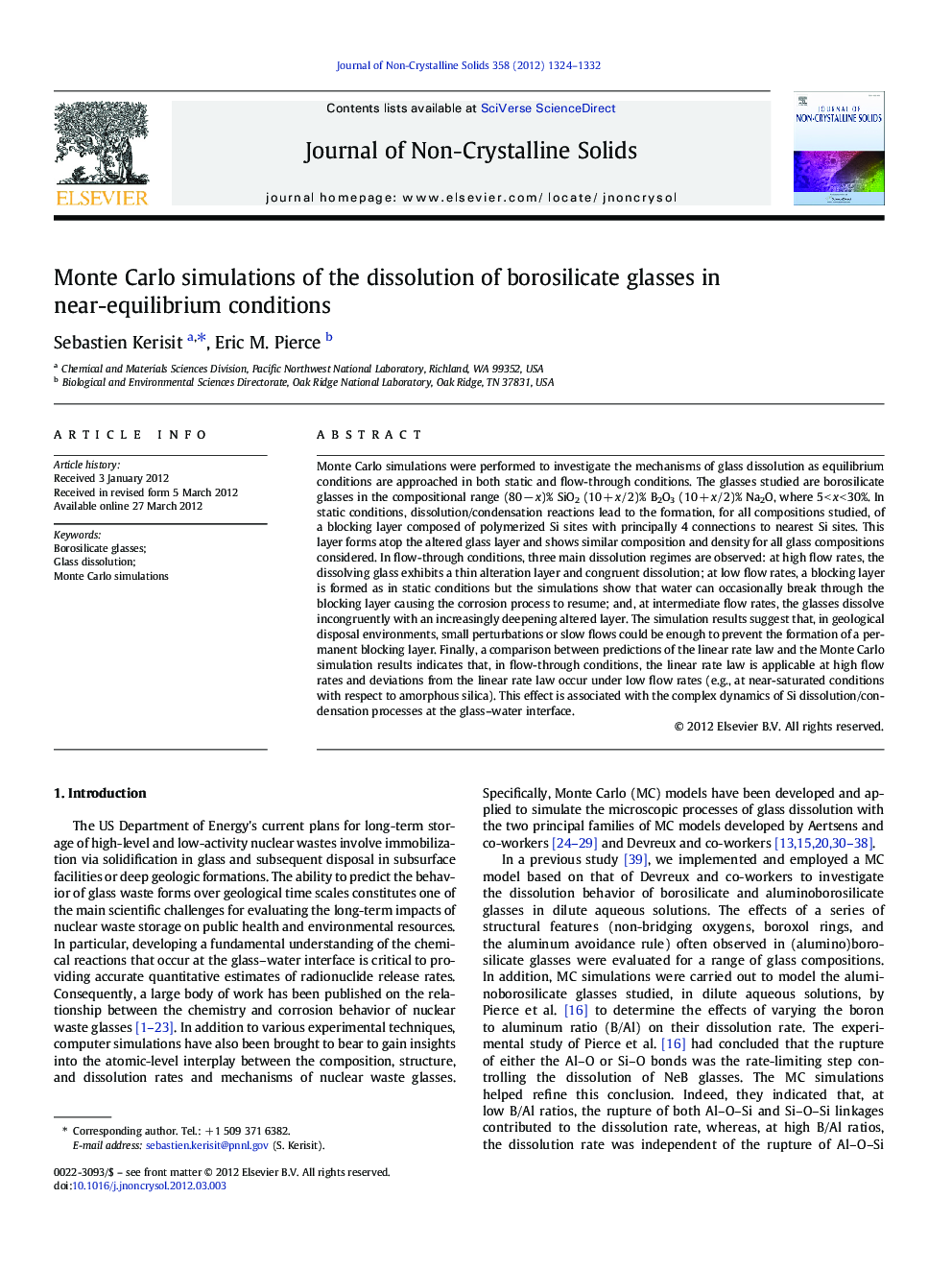| Article ID | Journal | Published Year | Pages | File Type |
|---|---|---|---|---|
| 1481953 | Journal of Non-Crystalline Solids | 2012 | 9 Pages |
Monte Carlo simulations were performed to investigate the mechanisms of glass dissolution as equilibrium conditions are approached in both static and flow-through conditions. The glasses studied are borosilicate glasses in the compositional range (80 − x)% SiO2 (10 + x / 2)% B2O3 (10 + x / 2)% Na2O, where 5 < x < 30%. In static conditions, dissolution/condensation reactions lead to the formation, for all compositions studied, of a blocking layer composed of polymerized Si sites with principally 4 connections to nearest Si sites. This layer forms atop the altered glass layer and shows similar composition and density for all glass compositions considered. In flow-through conditions, three main dissolution regimes are observed: at high flow rates, the dissolving glass exhibits a thin alteration layer and congruent dissolution; at low flow rates, a blocking layer is formed as in static conditions but the simulations show that water can occasionally break through the blocking layer causing the corrosion process to resume; and, at intermediate flow rates, the glasses dissolve incongruently with an increasingly deepening altered layer. The simulation results suggest that, in geological disposal environments, small perturbations or slow flows could be enough to prevent the formation of a permanent blocking layer. Finally, a comparison between predictions of the linear rate law and the Monte Carlo simulation results indicates that, in flow-through conditions, the linear rate law is applicable at high flow rates and deviations from the linear rate law occur under low flow rates (e.g., at near-saturated conditions with respect to amorphous silica). This effect is associated with the complex dynamics of Si dissolution/condensation processes at the glass–water interface.
► We performed Monte Carlo simulations of the dissolution of borosilicate glasses. ► Glass dissolution is studied as equilibrium conditions are approached. ► In static conditions, a blocking layer is formed at all compositions studied. ► In flow-through conditions, three main dissolution regimes are observed.
